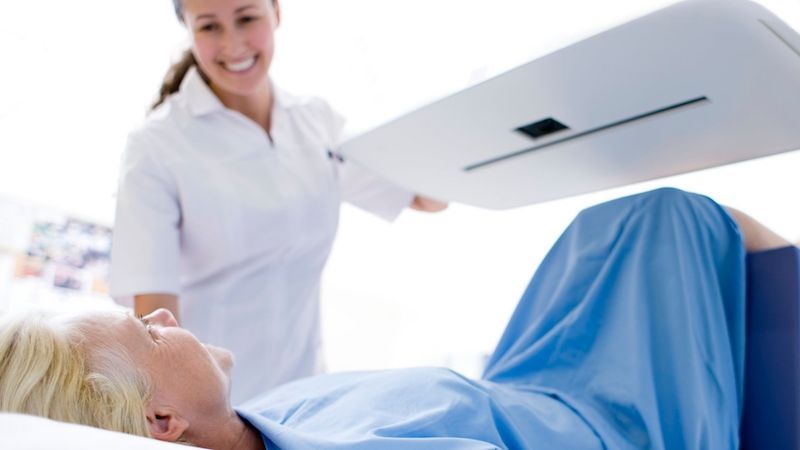
What is a Bone Density Test?
Bone density tests use low-dose x-rays to measure the level of certain minerals, specifically calcium, in a specific section of a bone. Bone density tests can diagnose you with low bone density or osteoporosis. The test can also be used the measure the success of your current osteoporosis treatment by determining if your condition is improving, worsening, or remaining the same.
Bone Density Tests may be known by a myriad of alternative names, including:
- BMD Test
- Bone densitometry
- Dual-energy x-ray absorptiometry or DEXA scan
- Bone Scan
- DXA
- p-DEXA
Ultimately, the goal of a bone density test is to help you determine if you have osteoporosis and may be at risk for a fall in the future, according to the National Osteoporosis Foundation. It is a painless procedure, which can completed in less than half an hour.
Who Should Have a Bone Density Test?
Individuals who are at risk for osteoporosis should have a bone density test. If you you are at risk for osteoporosis, you may also be at risk for a fall in the future. Additionally, it is recommend that you have a bone density test if any of the following factors apply to you:
- you are a postmenopausal woman who is over 5 feet 7 inches or weighs less than 125 and you are not taking estrogen.
- you or your mother have a history of smoking.
- you have a family history of osteoporosis or your mother has a history of bone fracture.
- you have type I diabetes, kidney disease, liver disease, a thyroid or parathyroid condition
- you have a medical conditions or you are taking medications known to be associated with bone loss.
- you have experienced a fracture as the result of mild trauma.
- you have had an x-ray which indicated other signs of osteoporosis.
The National Osteoporosis Foundation suggests you repeat a bone density test every one to two years if you have been diagnosed with osteoporosis. By doing so, your doctor can measure the effectiveness of the medication you are taking.

